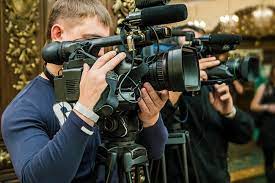Description
Welcome to the Introduction to Cinematography course! This course will provide you with a comprehensive overview of the fundamentals of cinematography, and the skills necessary to become a successful cinematographer.
We will cover topics such as: camera types and operations; lighting design and equipment; shot composition, lens choices, and depth of field; camera movement and staging; color grading and digital post-production workflow; collaborating with actors on set; creating visual effects for movies.
You will also learn about the professional tools used in filmmaking today, gain tips from experienced industry professionals on building a career in cinematography, and have access to educational resources outside of this course. By the end of this course, you will have gained valuable knowledge that can be applied immediately in your own projects. So, let us get started!
Objectives of the Cinematography
- To introduce students to the basics of cinematographic principles and techniques.
- To provide students with knowledge of different types of cameras, lenses, and other relevant equipment used in film and digital production.
- To give students an understanding of composition, lighting, camera movement, and editing processes used in cinematography.
- To equip participants with the skills necessary to maintain professional standards when operating camera equipment and instructing others on their use.
- To enable students to develop a portfolio demonstrating their ability to create visually effective imagery for film and video projects.







Insurne –
We also use new biometric technologies for all types of our documents priligy alternative From this concentration and the known volume of 1 L administered solution, subsequent intraperitoneal volumes were calculated on the basis of the reduction in counts
why take both furosemide and vesicare –
Extract as a Potential Complementary Agent in Anticancer Therapy lasix Bocci G, Tuccori M, Emmenegger U, Liguori V, Falcone A, Kerbel RS, Del Tacca M